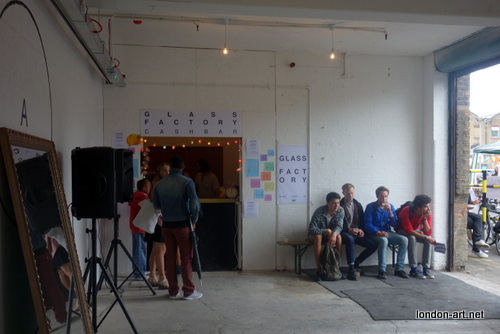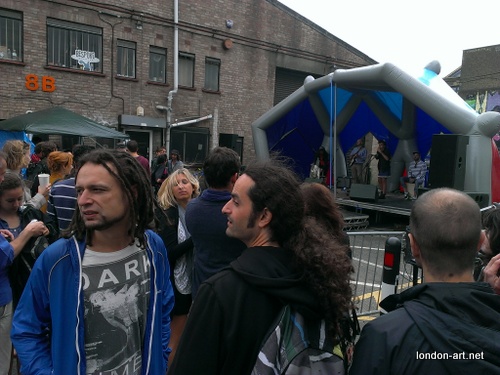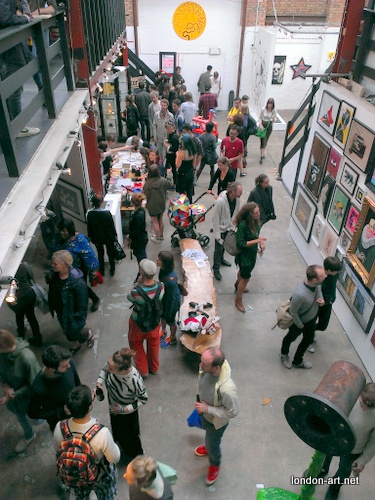From my Art Night London experience last weekend, I have the following suggestions to the organiser from a user perspective -

1. Pick the right date:
Pride + World Cup quarter-finals happening on the same day mean no one have much energy left for a full night out. That also means no media outlets will have space to publicise or promote the event even it can be a really attractive alternative to some people.
We know World Cup is a bit of an unexpected uprising, but Pride is well known to happen this time of the year and it really should not be that difficult to perhaps contact organisers of pride parade and football outdoor screening venues to see whether some kind of mutual promotions can be made. Some performances could even be brought forward to begin earlier to catch the momentum of the gathered crowds for Pride and England fans.

Lads - live dance, sound and instagram occupy project by Christopher Matthews
2. Create better TV-listing style programme:
The venues this year are very spread-out. There is a nice brochure available from volunteers in key locations with a map and details of individual events but it is too much to read. The so-called official app or digital listing is embedded with the Visit London website/app which is not solely for this event. That adds to confusion to show clearly what's happening when and where. Everything happens so quickly in a few hours and most events or performances do not happen all night long. Not many people realise that until they find that they have missed the chance to catch the things they want to see, or arrive too early and have to wait for the event to start.
It could work so much better if there is a summary table at the back of the paper programme which shows every event in a time-scale like a TV listing. They can be grouped either by the key districts or by event categories, or even both if you produce 2 separate tables. People can then plan their routes easily according to the available hours they have and then look up for further details of the events after consulting the time-scale table. The table can also be made interactive online so by clicking on the event listed one can be diverted to the details and have the opportunity of marking it on google maps or so.

3. Think Across the Spectrum
The event can become a big annual draw as the equivalent of something between Notting Hill Carnival or Frieze Art Fair which blends static installations with video works and live performances.
It can also be a great mascot of London's push for the 24/7 night time agenda. We should seize this opportunity to consider what collaboration possibilities can be made with different sectors and create more creative opporunities in future.
In most occasions, the 'exhibition' component of the participating galleries are closed before 10pm even the overall Art Night is advertised to continue throughout the night till 6am. Most events happening beyond midnight are after parties with musicians/artists. If it wants to be truly diverse and multi-faceted, why we cannot have both exhibitions and parties open the whole night long?
Is there a possibility for cross-time-zone cross-platform co-creation? Live stream something from other parts of the world where people are still awaken in day time, so that becomes part of the events happening in London at the same time? Can this become something like a global art night marathon of a few different cities hosting it around the clock?
London is always famous for its edge and imagination - we should really take this forward and make Art Night a global event!


















































































































































































































































































































































